Unleash the Ultimate VR Experience: Building a High-End Gaming and Streaming PC for Simulation Masters So, you're ready to dive headfirst into the world of high-fidelity VR gaming and streaming?
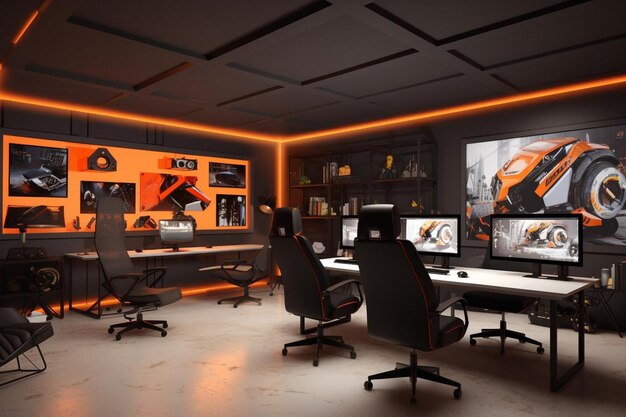
So, you're ready to dive headfirst into the world of high-fidelity VR gaming and streaming? You've come to the right place. As a seasoned PC builder, I'm here to guide you through crafting a rig that will not only handle the demanding requirements of titles like Assetto Corsa Competizione (ACC), DCS World, and Elite Dangerous but also allow you to share your immersive experiences with the world via live streaming. This isn't your average build; this is about achieving maximum immersion and performance. Get ready to spend some serious cash, but the reward is unparalleled VR fidelity and buttery-smooth frame rates. Let’s get started!
Core Components: The Heart of the Beast
This build prioritizes raw power. We're aiming for a stable 90 FPS in VR with high graphical settings while simultaneously streaming. That requires top-of-the-line components that work in perfect synergy.
- CPU: AMD Ryzen 9 7950X3D: This CPU is an absolute monster for gaming, especially in VR. The 3D V-Cache technology provides a massive boost to frame rates in demanding titles. It’s the brainpower behind our VR dreams.
- GPU: NVIDIA GeForce RTX 4090 (e.g., ASUS ROG Strix GeForce RTX 4090 OC Edition): The undisputed king of GPUs. The RTX 4090 delivers unmatched performance in VR, allowing you to crank up the settings and enjoy stunning visuals. The ASUS ROG Strix variant offers excellent cooling and overclocking potential.

Alt text: Close up shot of the ASUS ROG Strix RTX 4090 graphics card, highlighting its cooling system and powerful presence for high-end VR performance.
- RAM: 32GB (2x16GB) DDR5-6000 CL30 (e.g., G.Skill Trident Z5 Neo): VR and streaming are memory-intensive. 32GB of high-speed DDR5 RAM ensures smooth multitasking and prevents bottlenecks. The G.Skill Trident Z5 Neo is optimized for AMD Ryzen processors, delivering excellent performance and stability.
- Motherboard: ASUS ROG Crosshair X670E Hero: This motherboard is the foundation of our build. It offers excellent VRM cooling, plenty of PCIe 5.0 slots for future upgrades, and robust features for overclocking. It's the perfect platform for our high-end components.
- Storage: 2TB NVMe PCIe Gen4 SSD (e.g., Samsung 990 Pro) + 4TB HDD (e.g., Western Digital Black): Speed is crucial for VR gaming. A 2TB NVMe SSD for the operating system and games ensures lightning-fast loading times. A 4TB HDD provides ample storage for recordings and less frequently accessed files.
- PSU: 1000W 80+ Gold (e.g., Corsair RM1000x): The RTX 4090 and Ryzen 9 7950X3D are power-hungry components. A high-quality 1000W power supply provides ample headroom for overclocking and ensures stable power delivery. The Corsair RM1000x is a reliable and efficient option.
- Case: Fractal Design Meshify 2 XL: Airflow is critical for keeping our components cool. The Fractal Design Meshify 2 XL offers excellent airflow and plenty of space for our components, including liquid cooling.
Optional Add-ons: Enhancing the Experience
These components aren't strictly necessary, but they significantly enhance the VR gaming and streaming experience.
Cooling: Corsair iCUE H150i Elite LCD CPU Cooler + 3x Corsair iCUE QL120 RGB fans: Keeping the Ryzen 9 7950X3D cool is essential for maintaining peak performance. The Corsair iCUE H150i Elite LCD provides excellent cooling and customizable RGB lighting. Adding three Corsair iCUE QL120 RGB fans to the case further improves airflow and aesthetics. Tip: Optimize fan curves in the iCUE software for silent operation during non-gaming tasks.
VR Headset: Valve Index or HP Reverb G2: The Valve Index offers a high refresh rate and accurate tracking, while the HP Reverb G2 provides exceptional resolution. Choose the headset that best suits your preferences and budget.
Audio: Sennheiser HD 660 S headphones + external USB DAC/AMP (e.g., FiiO K5 Pro): Immersive audio is crucial for VR. The Sennheiser HD 660 S headphones deliver excellent sound quality, and an external DAC/AMP enhances the audio experience.
Microphone: Shure SM7B + Focusrite Scarlett Solo audio interface: For professional-quality streaming audio, the Shure SM7B is an industry standard. The Focusrite Scarlett Solo provides clean and clear audio input.
Streaming Peripherals: Elgato Stream Deck, Elgato Facecam: The Elgato Stream Deck simplifies stream management, while the Elgato Facecam delivers high-quality video.
Monitor: Ultrawide 1440p 144Hz monitor (e.g., ASUS ROG Strix XG349C): An ultrawide monitor is ideal for non-VR tasks and stream monitoring. A 144Hz refresh rate ensures smooth visuals.
Sim Racing/Flight Gear: Fanatec CSL DD wheelbase, Fanatec ClubSport Pedals V3, Thrustmaster HOTAS Warthog: For the ultimate simulation experience, invest in high-quality sim racing or flight gear. These peripherals significantly enhance immersion and control.
Performance Expectations: VR Nirvana
With this build, you can expect exceptional performance in VR gaming and streaming. Let's break it down by game:
- Assetto Corsa Competizione: Targeting a consistent 90 FPS on High/Epic settings in VR with 20+ AI cars is achievable. Utilizing OpenXR will reduce latency and further improve the experience.

Alt text: First-person VR screenshot of Assetto Corsa Competizione showing a racing cockpit, emphasizing the immersion and high graphical fidelity achievable with the build.
DCS World: Aiming for 60-90 FPS on High settings in VR is realistic, but requires careful tweaking of graphics options like shadows and clouds to balance visual quality and performance. DLSS can provide a significant performance boost.
Elite Dangerous: Expect a solid 90 FPS on High settings in VR. Utilize supersampling to improve image clarity and enhance the sense of presence.
Streaming: Maintaining a stable 60 FPS stream at 1080p is easily achievable. Using x264 encoding (medium preset) or NVENC (new) are both viable options. Monitor CPU/GPU usage to avoid bottlenecks and aim for a latency goal of less than 50ms.
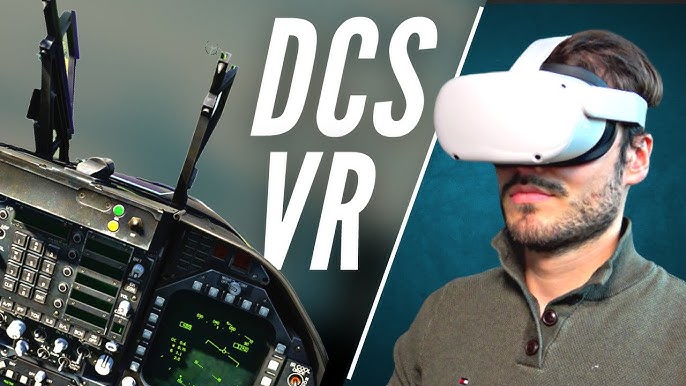
Alt text: Screenshot of OBS Studio streaming DCS World in VR, showing the monitoring of CPU/GPU usage, bitrate, and frame rate to ensure smooth and stable streaming performance.
Cost/Value Analysis: Is It Worth It?
Let's be honest, this build isn't cheap. However, it represents a significant investment in your VR gaming and streaming experience. Prebuilt VR-ready PCs often compromise on component quality or cooling. This custom build prioritizes high-end components and optimal cooling, resulting in superior performance, greater customization, and future upgradeability. The ability to run VR games at maximum settings, stream smoothly, and enjoy a more immersive and realistic experience justifies the cost for serious enthusiasts.
VR & Streaming: Pro Tips
Here are some crucial tips to maximize your VR and streaming experience:
- VR-Specific:
- Accurately measure your IPD and adjust the VR headset accordingly.
- Clean the VR headset lenses regularly with a microfiber cloth.
- Use cable management solutions (pulley systems) to minimize cable clutter and improve immersion.
- Adjust in-game graphics settings to balance visual quality and performance, prioritizing frame rate over resolution.
- Experiment with OpenXR and other runtime options for reduced latency.
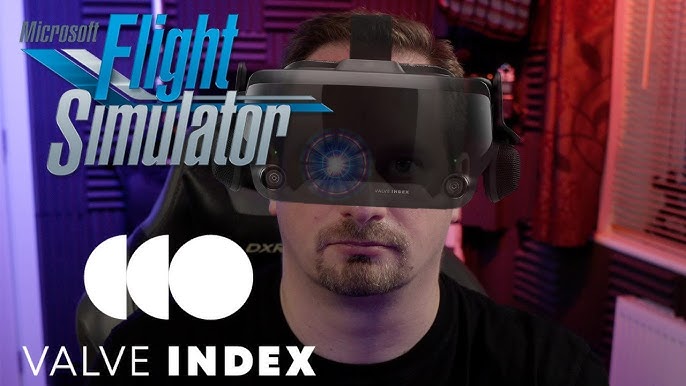
Alt text: A complete high-end VR setup featuring a VR headset (Valve Index or HP Reverb G2) alongside sim racing/flight gear, showcasing the immersive experience enabled by the PC build.
- Streaming:
- Use OBS Studio with appropriate encoding settings (NVENC for NVIDIA GPUs, x264 for CPU encoding).
- Optimize stream bitrate and resolution based on your internet upload speed.
- Use a dedicated scene for VR gameplay and another for non-VR content.
- Monitor CPU and GPU usage during streaming to identify potential bottlenecks.
- General:
- Update drivers regularly for CPU, GPU, and VR headset.
- Ensure proper airflow within the PC case to prevent overheating.
- Use a high-quality power supply to ensure stable power delivery.
- Consider undervolting the GPU to reduce power consumption and heat.
Upgrade Paths: Future-Proofing Your Rig
This build is already incredibly powerful, but here are some potential upgrade paths to consider:
- Future GPU upgrades will provide the most significant performance gains as VR technology advances.
- Consider upgrading to 64GB of RAM for memory-intensive applications and future-proofing.
- Adding a dedicated capture card can improve streaming performance, offloading the encoding process from the CPU or GPU.
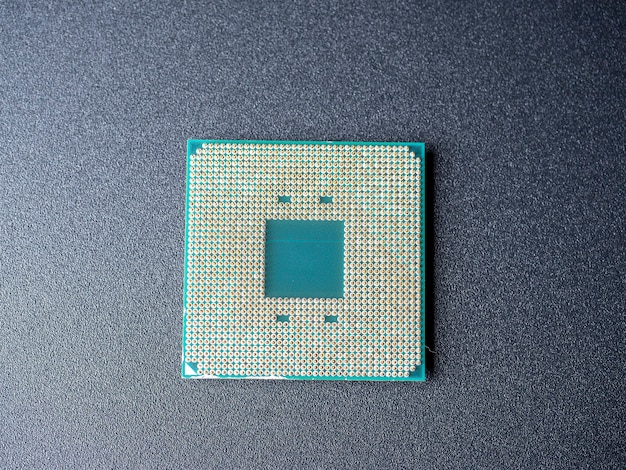
Alt text: Flat lay of the core PC components: CPU, GPU, RAM, Motherboard, and SSD, visually representing the premium quality and synergy needed for a high-end VR build.
Compatibility Notes: Ensuring a Smooth Build
- Ensure the motherboard supports the chosen CPU and RAM speed.
- Check the case dimensions to ensure the CPU cooler and GPU fit.
- Verify that the power supply provides sufficient wattage for all components.
Pitfalls to Avoid: Learning from My Mistakes
- Overspending on aesthetics at the expense of performance. RGB is cool, but performance is king.
- Ignoring cooling requirements, leading to thermal throttling. Invest in adequate cooling!
- Using outdated drivers, resulting in compatibility issues and performance degradation. Always keep your drivers up to date.
- Neglecting cable management, hindering airflow and making future upgrades difficult. Take the time to manage your cables properly.
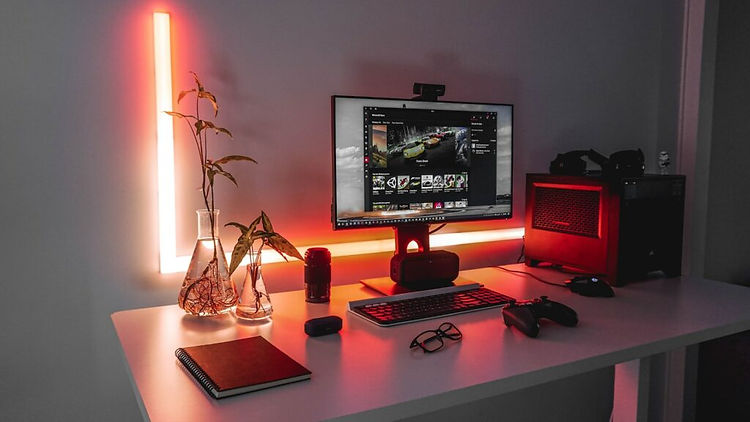
Alt text: A streamer in a dedicated streaming space showcasing the high-end VR gaming and streaming PC build along with essential peripherals like Elgato Stream Deck and Facecam.
Level Up Your VR Experience
Building a high-end VR gaming and streaming PC is an investment in unparalleled immersion and performance. By carefully selecting components, optimizing settings, and following these tips, you'll be well on your way to experiencing VR games like never before. Get ready to push the boundaries of virtual reality and share your amazing experiences with the world! Good luck, and happy gaming!